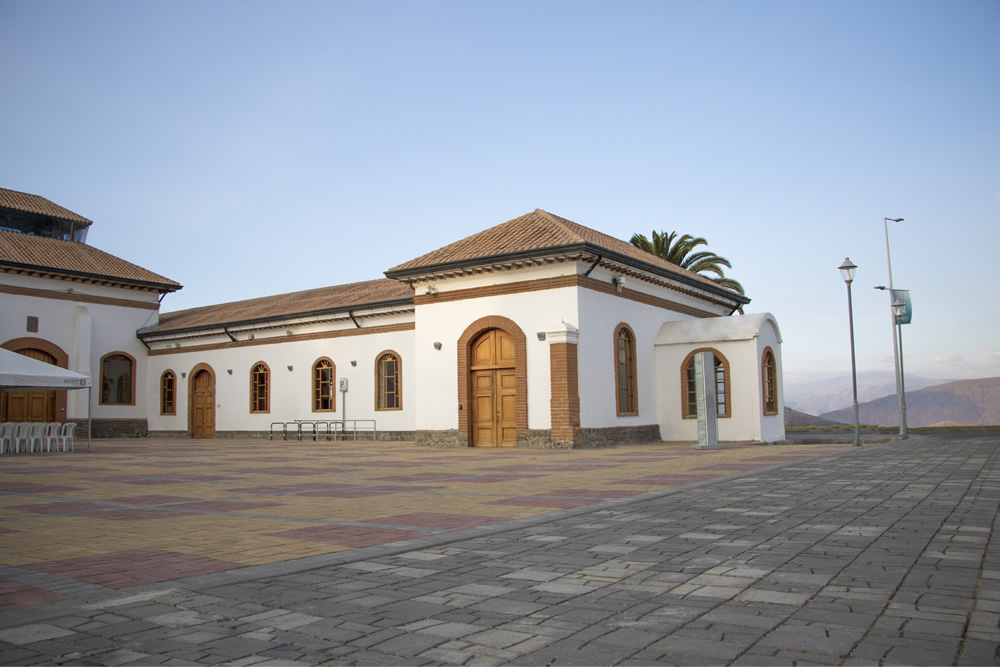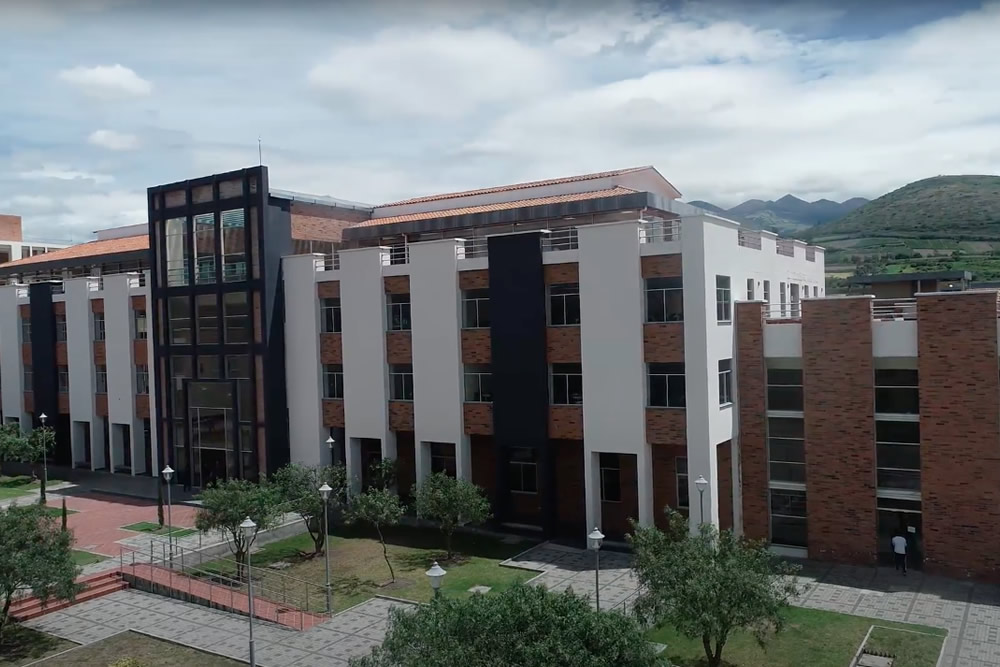Qualitative phytochemical study, determination of total phenolic content, UV-VIS analysis, and determination of antimicrobial and anti-inflammatory activities of Alternanthera porrigens / Daniela Estefanía González Falconí ; tutor Vivian Morera Córdova
Tipo de material: TextoIdioma: Inglés Idioma del resumen: Español Fecha de copyright: Urcuquí, 2020Descripción: 68 hojas : ilustraciones (algunas a color) ; 30 cm + 1 CD-ROMTema(s): Recursos en línea: Nota de disertación: Trabajo de integración curricular (QUÍMICO/A.). Universidad de Investigación de Tecnología Experimental Yachay. Urcuquí, 2020 Resumen: Ecuador is a mega-diverse country with many species of medicinal plants that grow in the Ecuadorian Andes. Cerón, in 2006 reported ethnomedical information on 432 medicinal plant species. Of these, 273 are plants marketed in the herbal stores of local markets, and 255 are wild plants. Among the species, it was reported Alternanthera porrigens or commonly known as "moradilla". The therapeutic use of this plant to treat circulatory disorders, as a purgative, to relieve flu, for menstrual disorders appears and most important for inflammatory conditions. This work addresses the preliminary qualitative phytochemical analysis of the ethanolic, chloroformic, and aqueous extracts of the leaves and flowers of Alternanthera porrigens. For this, the tissues of the plant were separated, washed, and dried until an electrical mill could spray these until obtaining a fine powder. Then, by maceration, it was obtained three different extracts for each tissue, with ethanol, chloroform, and water. So, it started with preliminary phytochemical screening to the extracts, for the identification of secondary metabolites in the tissues of the plant. Once it was observed the presence of phenols in the extracts with the assays, it proceeded to determine the total phenolic content of the same using the Folin-Ciocalteau method. Also, UV-VIS spectra of the different extracts were obtained to corroborate the presence of the secondary metabolites. Subsequently, the previous results were compared with other species of the genus Alternanthera. Fortunately, these were within the same range, so it was assumed that Alternanthera porrigens could have similar biological activities. For that, it was determined the antimicrobial activity of the ethanolic and chloroformic extracts at concentrations of 10 mg/mL and 25 mg/mL, these gave positive results for a Gram-negative bacteria, Escherichia coli. So, it was carried out an optical density assay to prove if the extracts had antimicrobial activity at a concentration of 1 mg/mL, but the activity obtained was null at this concentration. And finally, an anti-inflammatory activity was tested for the dried extract of flowers, which results were lower than expected in comparison with other species of the same genus. In the end, it was proved the presence of phenols, terpenes, and other secondary metabolites that contribute to the biological activities in Alternanthera porrigens.
TextoIdioma: Inglés Idioma del resumen: Español Fecha de copyright: Urcuquí, 2020Descripción: 68 hojas : ilustraciones (algunas a color) ; 30 cm + 1 CD-ROMTema(s): Recursos en línea: Nota de disertación: Trabajo de integración curricular (QUÍMICO/A.). Universidad de Investigación de Tecnología Experimental Yachay. Urcuquí, 2020 Resumen: Ecuador is a mega-diverse country with many species of medicinal plants that grow in the Ecuadorian Andes. Cerón, in 2006 reported ethnomedical information on 432 medicinal plant species. Of these, 273 are plants marketed in the herbal stores of local markets, and 255 are wild plants. Among the species, it was reported Alternanthera porrigens or commonly known as "moradilla". The therapeutic use of this plant to treat circulatory disorders, as a purgative, to relieve flu, for menstrual disorders appears and most important for inflammatory conditions. This work addresses the preliminary qualitative phytochemical analysis of the ethanolic, chloroformic, and aqueous extracts of the leaves and flowers of Alternanthera porrigens. For this, the tissues of the plant were separated, washed, and dried until an electrical mill could spray these until obtaining a fine powder. Then, by maceration, it was obtained three different extracts for each tissue, with ethanol, chloroform, and water. So, it started with preliminary phytochemical screening to the extracts, for the identification of secondary metabolites in the tissues of the plant. Once it was observed the presence of phenols in the extracts with the assays, it proceeded to determine the total phenolic content of the same using the Folin-Ciocalteau method. Also, UV-VIS spectra of the different extracts were obtained to corroborate the presence of the secondary metabolites. Subsequently, the previous results were compared with other species of the genus Alternanthera. Fortunately, these were within the same range, so it was assumed that Alternanthera porrigens could have similar biological activities. For that, it was determined the antimicrobial activity of the ethanolic and chloroformic extracts at concentrations of 10 mg/mL and 25 mg/mL, these gave positive results for a Gram-negative bacteria, Escherichia coli. So, it was carried out an optical density assay to prove if the extracts had antimicrobial activity at a concentration of 1 mg/mL, but the activity obtained was null at this concentration. And finally, an anti-inflammatory activity was tested for the dried extract of flowers, which results were lower than expected in comparison with other species of the same genus. In the end, it was proved the presence of phenols, terpenes, and other secondary metabolites that contribute to the biological activities in Alternanthera porrigens.
| Tipo de ítem | Biblioteca actual | Signatura | Copia número | Estado | Fecha de vencimiento | Código de barras | Reserva de ítems | |
|---|---|---|---|---|---|---|---|---|
 Tesis
Tesis
|
Biblioteca Yachay Tech | ECQI0037 (Navegar estantería(Abre debajo)) | 1 | No para préstamo | T000152 |
Trabajo de integración curricular (QUÍMICO/A.). Universidad de Investigación de Tecnología Experimental Yachay. Urcuquí, 2020
Incluye referencias bibliográficas (páginas 55-66)
Trabajo de integración curricular con acceso abierto
Texto (Hypertexto links)
Ecuador is a mega-diverse country with many species of medicinal plants that grow in the Ecuadorian Andes. Cerón, in 2006 reported ethnomedical information on 432 medicinal plant species. Of these, 273 are plants marketed in the herbal stores of local markets, and 255 are wild plants. Among the species, it was reported Alternanthera porrigens or commonly known as "moradilla". The therapeutic use of this plant to treat circulatory disorders, as a purgative, to relieve flu, for menstrual disorders appears and most important for inflammatory conditions. This work addresses the preliminary qualitative phytochemical analysis of the ethanolic, chloroformic, and aqueous extracts of the leaves and flowers of Alternanthera porrigens. For this, the tissues of the plant were separated, washed, and dried until an electrical mill could spray these until obtaining a fine powder. Then, by maceration, it was obtained three different extracts for each tissue, with ethanol, chloroform, and water. So, it started with preliminary phytochemical screening to the extracts, for the identification of secondary metabolites in the tissues of the plant. Once it was observed the presence of phenols in the extracts with the assays, it proceeded to determine the total phenolic content of the same using the Folin-Ciocalteau method. Also, UV-VIS spectra of the different extracts were obtained to corroborate the presence of the secondary metabolites. Subsequently, the previous results were compared with other species of the genus Alternanthera. Fortunately, these were within the same range, so it was assumed that Alternanthera porrigens could have similar biological activities. For that, it was determined the antimicrobial activity of the ethanolic and chloroformic extracts at concentrations of 10 mg/mL and 25 mg/mL, these gave positive results for a Gram-negative bacteria, Escherichia coli. So, it was carried out an optical density assay to prove if the extracts had antimicrobial activity at a concentration of 1 mg/mL, but the activity obtained was null at this concentration. And finally, an anti-inflammatory activity was tested for the dried extract of flowers, which results were lower than expected in comparison with other species of the same genus. In the end, it was proved the presence of phenols, terpenes, and other secondary metabolites that contribute to the biological activities in Alternanthera porrigens.
Textos en inglés con resúmenes en español e inglés
No hay comentarios en este titulo.



